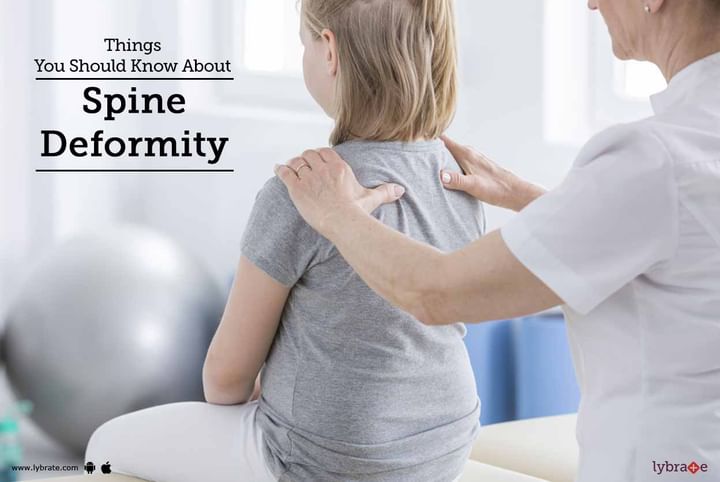Things You Should Know About Spine Deformity
Spine deformity is a medical condition that refers to any type of abnormality in the shape, alignment, or formation of the vertebral column. The human spine, in its normal state, has a gentle curvature but when these curves become extreme or move out of place, it leads to deformities. Some deformities are mild in nature while some are serious. The former are not recognizable but the latter mark the personality of the individual and also cause physical problems. Spine deformity is also known as a misshapen spine or curvy spine and can affect anyone – child, adolescent, adult or old.
The signs and symptoms of spine deformity include low back pain, weakness, pain in legs or thighs, muscle spasms, breathing difficulty, uneven shoulders or hips or both, misalignment of the head, protruding shoulder blade, and poor gait.
- Scoliosis, Kyphosis, and Spondylolisthesis - Spinal deformity is mainly categorized into three conditions that commonly affects people: These spinal deformities include the following:
- Scoliosis – In this type of spinal deformity, the spine becomes curved from side to side forming an “S” or “C” shape. It mostly affects teenagers in their growing years but can also affect children and adults. It can be caused due to birth defects, genetic reasons, or neurological defects. It can be structural or nonstructural. The former is caused by disease, injury or birth defect and it is permanent in nature. The latter is temporary and can be treated with surgery.
- Kyphosis – Also known as a hunchback, kyphosis is a condition marked by excessive curvature in the upper part of the spine. This is a very visible condition and the person has a hump on their upper back. It can affect anyone and is generally known to result because of poor posture but an infection in the spine, injury, slipped disc, muscle weakness, arthritis, and aging can also trigger kyphosis.
- Spondylolisthesis – In this condition, a bone in the spine moves out of position, either forward or backward, causing a deformity in the spine. It is caused by aging, arthritis, or general degeneration caused by wear and tear.
Treatment: Spinal deformity, in most of the cases, is treatable if it is detected on time. In cases of kyphosis or where the patient is experiencing symptoms such as pain or other tangible signs, physical examination by an orthopedist is necessary. Upon further screening through an X-ray or MRI scan, the degree of deformity is determined and then the doctor starts treatment. Some cases can be treated through braces or physical therapy or exercise. They correct the abnormal curvature of the spine and the individual can get a normal curvature after the treatment but in some cases, surgery is the only option left as only surgical intervention can rectify the deformed curvature. The surgical techniques include spinal fusion and insertion of implants.
Prevention: Spinal deformity is painful as well as personality diminishing condition and hence, needs timely treatment but it can be prevented as well. For it to happen, causes such as poor posture, arthritis, and slip disc need to be addressed in time. One should be extra careful about pain in the back or legs and take immediate help from the doctor. Also, one should try to maintain a healthy weight and do regular exercise.
In case you have a concern or query you can always consult an expert & get answers to your questions!



+1.svg)
